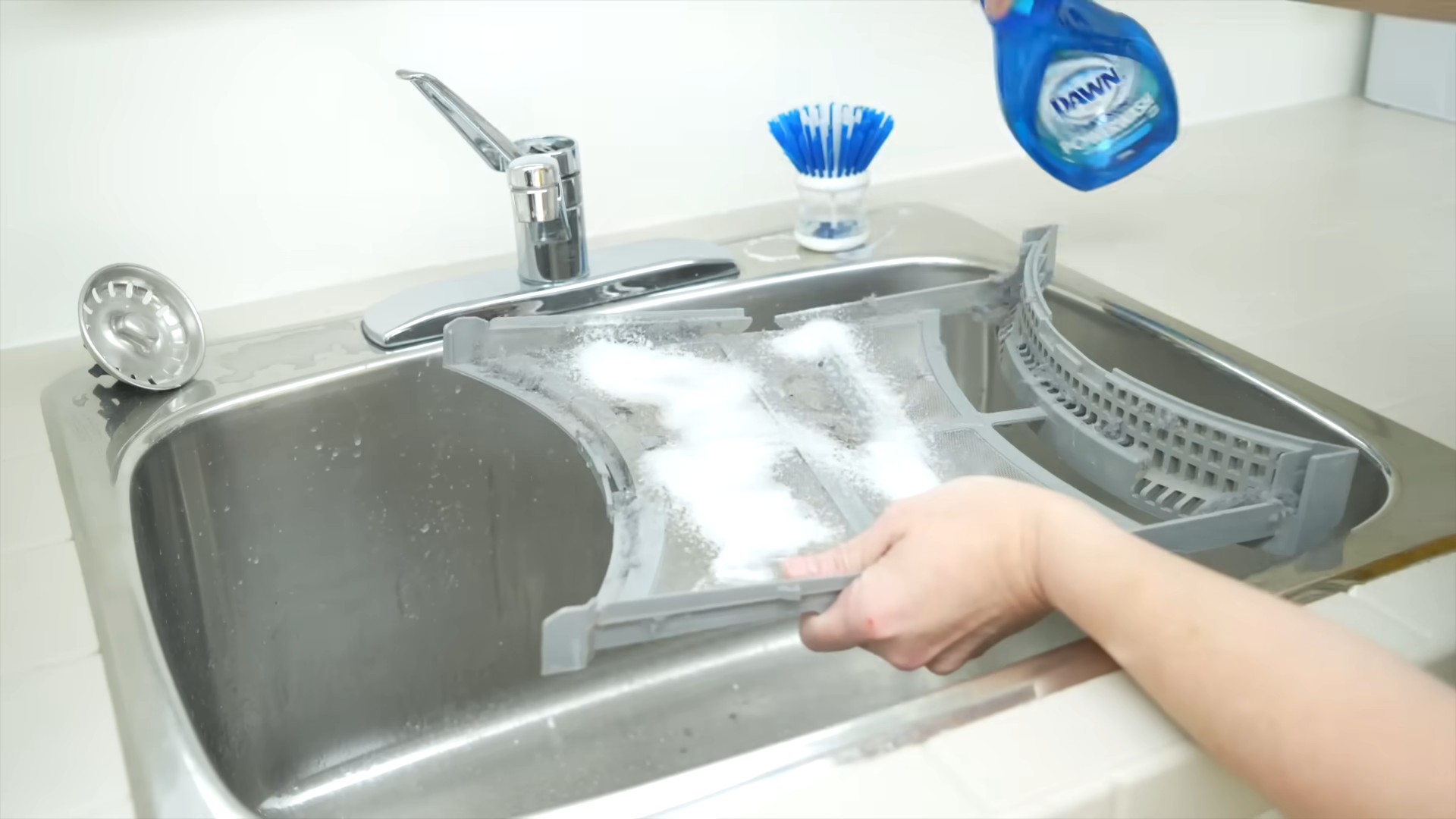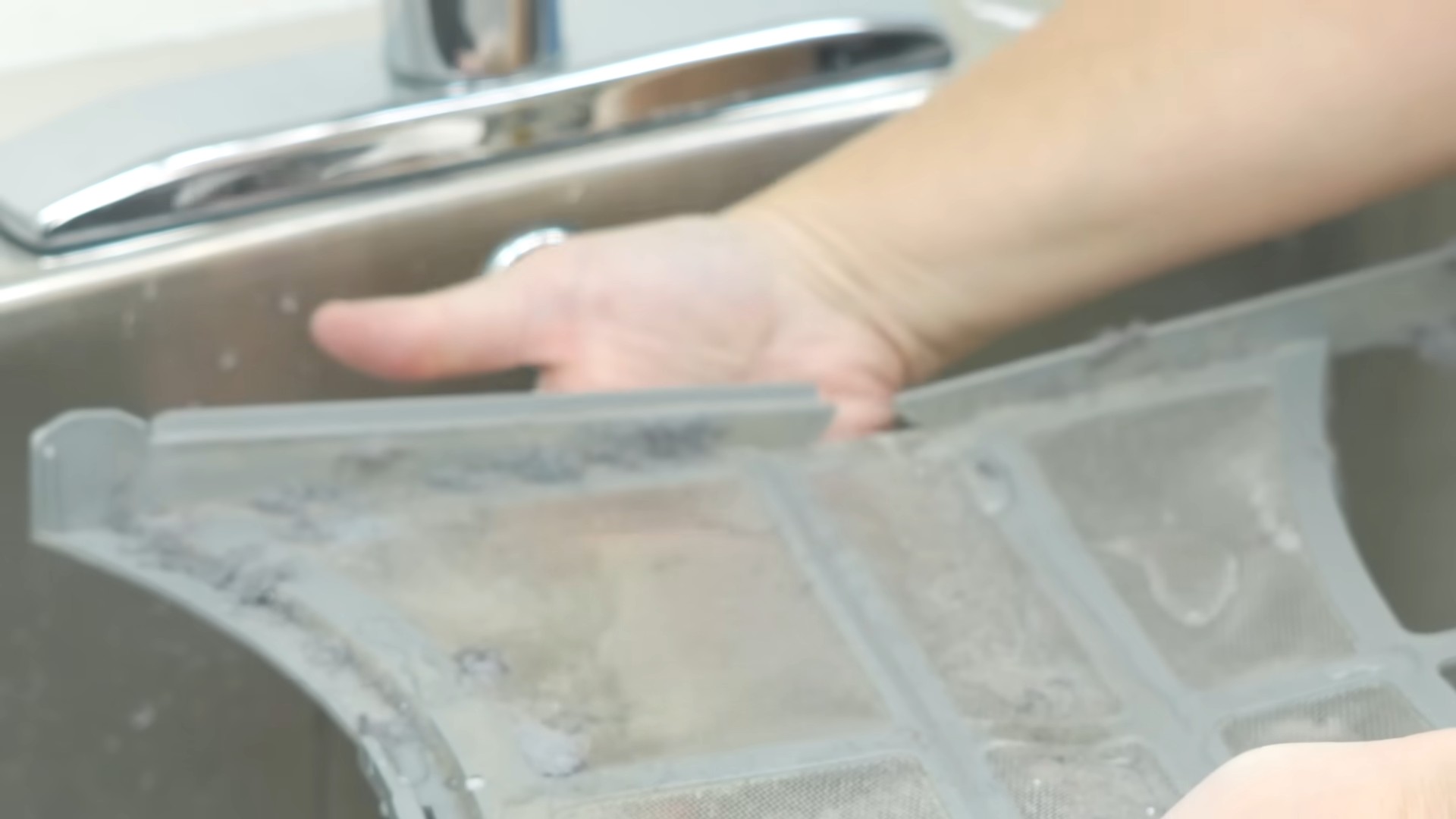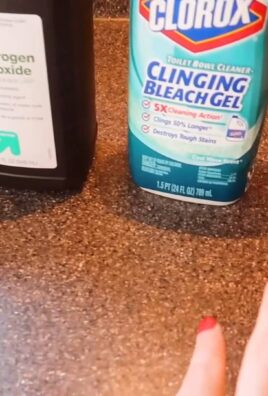Lint Free Laundry Routine: Are you tired of your favorite black leggings looking perpetually dusty? Do you spend more time picking lint off your clothes than actually wearing them? I feel your pain! We’ve all been there, battling the never-ending fuzz that clings to our garments like a lovesick puppy. But fear not, fellow laundry warriors, because I’m about to share some game-changing DIY tricks that will revolutionize your laundry routine and banish lint to the land of forgotten fabrics!
The struggle against lint is an age-old one. While we might not find ancient Egyptians complaining about lint on their linen (pun intended!), the desire for clean, presentable clothing has always been a part of human culture. Today, with the rise of synthetic fabrics and fast fashion, the lint problem seems more pervasive than ever. But don’t despair!
This DIY article is your ultimate guide to achieving a lint free laundry routine. I’ll walk you through simple, effective hacks using everyday household items, from vinegar and baking soda to the humble dryer sheet. These aren’t just quick fixes; they’re sustainable solutions that will save you time, money, and the frustration of constantly de-linting your wardrobe. So, grab your laundry basket, and let’s dive in to make your clothes look their absolute best!

Say Goodbye to Lint: My Ultimate Lint-Free Laundry Routine
Okay, friends, let’s talk lint. That fuzzy, clingy stuff that seems to multiply in your dryer and then stubbornly attach itself to your favorite clothes. It’s the bane of my laundry existence, and I’m guessing it’s yours too! But fear not, because after years of battling this fluffy foe, I’ve developed a routine that seriously minimizes lint. It’s not a magic bullet, but trust me, it makes a HUGE difference.
Here’s the breakdown of my lint-busting laundry strategy:
- Sorting is Key: This is where it all begins. Proper sorting prevents lint transfer in the first place.
- Pre-Wash Prep: A little prep work before you even load the washer can significantly reduce lint.
- Washer Wisdom: Choosing the right settings and using the right products in your washing machine is crucial.
- Dryer Dominance: The dryer is where lint really gets going, so we need to be strategic here.
- Maintenance Matters: Keeping your machines clean is essential for optimal performance and lint reduction.
Sorting Like a Pro
This is the foundation of a lint-free laundry routine. Think of it as your first line of defense!
- Separate by Fabric Type: This is the golden rule. Separate lint producers (like towels, fleece, and chenille) from lint attractors (like corduroy, dark-colored clothing, and synthetics). I have separate hampers for these categories.
- Separate by Color: This is laundry 101, but it’s worth repeating. Dark colors should always be washed separately from light colors to prevent dye transfer and, you guessed it, lint transfer.
- Turn Clothes Inside Out: This helps protect the outer layer of your clothes from friction, which is a major cause of lint. Plus, it helps clean the inside of your garments more effectively.
- Check Pockets: Empty all pockets before washing. Tissues, receipts, and other paper items are lint bombs waiting to explode! I can’t tell you how many times I’ve learned this the hard way.
Pre-Wash Prep: The Secret Weapon
Before you even think about tossing your clothes into the washing machine, take a few minutes for these simple steps.
- Shake It Out: Give each garment a good shake before putting it in the washer. This helps dislodge loose fibers and debris that would otherwise end up as lint. I usually do this outside or over a trash can.
- Use a Lint Roller: For items that are particularly prone to lint (like black pants or sweaters), use a lint roller to remove any visible lint before washing. This prevents the lint from spreading to other clothes in the wash.
- Pre-Treat Stains: Address any stains before washing. This will help prevent them from setting and becoming more difficult to remove later. Plus, it ensures that your clothes are as clean as possible, which can also help reduce lint.
- Mesh Laundry Bags: These are lifesavers for delicate items and anything that tends to shed a lot. They help contain the lint and prevent it from spreading to other clothes. I use them for sweaters, lingerie, and anything with embellishments.
Washer Wisdom: Making the Right Choices
Your washing machine settings and detergent choices can have a big impact on lint production.
- Choose the Right Water Temperature: Cold water is generally best for preventing lint, as it helps to keep fibers from breaking down. However, hot water is sometimes necessary for heavily soiled items. When in doubt, check the care label on your garment.
- Select the Appropriate Wash Cycle: Use a gentle cycle for delicate items and a more robust cycle for heavier items like towels and jeans. Over-washing can damage fibers and lead to more lint.
- Don’t Overload the Washer: Overloading the washer can prevent clothes from being properly cleaned and rinsed, which can lead to more lint. Make sure to leave enough room for the clothes to move freely.
- Use a High-Quality Detergent: Choose a detergent that is designed to remove dirt and debris effectively without being too harsh on fabrics. I prefer liquid detergents over powder detergents, as they tend to dissolve more easily and leave less residue.
- Consider Adding White Vinegar: Adding 1/2 cup of white vinegar to the rinse cycle can help to soften fabrics, reduce static cling, and remove detergent residue, all of which can contribute to less lint.
- Avoid Fabric Softener: While fabric softener might make your clothes feel soft, it can actually leave a residue on fabrics that attracts lint. I avoid using it altogether. If you want to soften your clothes, try using dryer balls instead.
Dryer Dominance: Taming the Lint Beast
The dryer is where the real lint action happens. Here’s how to minimize it.
- Clean the Lint Trap After Every Load: This is the most important step! A clogged lint trap reduces airflow, which can lead to longer drying times, increased lint production, and even a fire hazard. I make it a habit to clean the lint trap after every single load.
- Use Dryer Balls: Dryer balls help to separate clothes and improve airflow, which can reduce drying time and minimize lint. I prefer wool dryer balls over plastic ones, as they are more eco-friendly and don’t contain any harmful chemicals.
- Don’t Over-Dry Your Clothes: Over-drying can damage fibers and lead to more lint. Remove your clothes from the dryer as soon as they are dry. I often use the “less dry” setting on my dryer to prevent over-drying.
- Shake Clothes Out Again: Before folding or hanging your clothes, give them another good shake to remove any remaining loose lint.
- Air Dry When Possible: Whenever possible, air dry your clothes instead of using the dryer. This is the most effective way to prevent lint and extend the life of your garments. I love hanging my clothes outside on a sunny day!
Maintenance Matters: Keeping Your Machines in Tip-Top Shape
Regular maintenance is essential for keeping your washing machine and dryer running efficiently and minimizing lint production.
- Clean Your Washing Machine Regularly: Over time, detergent residue, mineral deposits, and other debris can build up in your washing machine, which can contribute to lint. I clean my washing machine about once a month by running an empty cycle with hot water and a cup of white vinegar or a washing machine cleaner.
- Clean Your Dryer Vent: A clogged dryer vent can reduce airflow, increase drying time, and even pose a fire hazard. I clean my dryer vent at least once a year, or more often if I notice that my clothes are taking longer to dry. You can use a dryer vent cleaning kit or hire a professional to do this.
- Inspect Hoses and Connections: Regularly inspect the hoses and connections on your washing machine and dryer for leaks or damage. Replace any damaged parts immediately.
- Consider a Dryer Sheet Alternative: Dryer sheets can leave a waxy residue on your lint screen, reducing its effectiveness. Consider using dryer balls or a liquid fabric softener alternative instead.
By following these steps, I’ve significantly reduced the amount of lint in my laundry. It takes a little extra effort, but it’s totally worth it to have clean, lint-free clothes! I hope these tips help you conquer your own lint battles. Happy laundering!

Conclusion
So, there you have it! Mastering a lint free laundry routine doesn’t require expensive gadgets or complicated processes. By implementing these simple yet effective DIY tricks, you can say goodbye to those pesky lint bunnies clinging to your favorite clothes and hello to a wardrobe that looks fresh, clean, and vibrant.
This isn’t just about aesthetics, though. Reducing lint buildup can actually extend the life of your clothes. Less friction during washing and drying means less wear and tear on the fibers, keeping your garments looking newer for longer. Think of it as an investment in your wardrobe!
But the benefits don’t stop there. A lint free laundry routine also contributes to a more efficient laundry system overall. Less lint means less clogging in your dryer vents, which can improve dryer performance and even reduce the risk of fire. It’s a win-win situation for your clothes, your appliances, and your peace of mind.
We’ve covered several powerful techniques, from the humble vinegar rinse to the strategic use of mesh laundry bags. Remember, consistency is key. Incorporating these tips into your regular laundry routine will yield the best results. Don’t be afraid to experiment and find what works best for your specific washing machine, dryer, and the types of fabrics you typically wash.
Variations and Suggestions:
* Essential Oil Boost: Add a few drops of your favorite essential oil (like lavender or tea tree) to your vinegar rinse for a subtle, fresh scent. Just be sure the oil is safe for fabrics.
* Fabric Softener Alternative: If you’re looking to ditch fabric softener altogether, try using dryer balls. They help to separate clothes and improve airflow, reducing static and softening fabrics naturally. Wool dryer balls are a popular and eco-friendly choice.
* Targeted Lint Removal: For particularly stubborn lint on dark clothing, try using a lint roller or a piece of packing tape wrapped around your hand. Gently press and lift to remove the lint.
* Pre-Wash Soak: For heavily soiled or lint-prone items, consider a pre-wash soak in cold water with a cup of baking soda. This can help to loosen dirt and lint before the main wash cycle.
* Hard Water Considerations: If you have hard water, it can contribute to lint buildup. Consider using a water softener or adding a water softening agent to your wash.
We are confident that these DIY tricks will revolutionize your laundry experience. No more embarrassing lint clinging to your black pants or fuzzy sweaters!
Now it’s your turn. We encourage you to try these techniques and see the difference for yourself. Share your experiences in the comments below! What worked best for you? Do you have any other lint-fighting tips to share? We’d love to hear from you and learn from your experiences. Let’s create a community of lint-free laundry enthusiasts!
Don’t delay, start your journey to a lint free laundry routine today. Your clothes (and your dryer) will thank you!
Frequently Asked Questions (FAQ)
Why is lint such a problem in laundry?
Lint is essentially the tiny fibers that break off from fabrics during washing and drying. These fibers can come from your clothes, towels, bedding, and even the washing machine itself. The problem arises when these fibers accumulate on your clothes, making them look dull, worn, and sometimes even dirty. Lint can also clog your dryer vents, reducing efficiency and posing a fire hazard. Furthermore, excessive lint can contribute to allergies and respiratory problems for some individuals.
How often should I clean my lint trap?
You should clean your lint trap after every single load of laundry. This is the most basic and crucial step in preventing lint buildup. A clogged lint trap restricts airflow, making your dryer work harder and longer, which wastes energy and increases the risk of fire. Make it a habit to empty the lint trap before starting each new load.
Will vinegar really help reduce lint?
Yes, vinegar is a surprisingly effective lint fighter. Adding about half a cup of white vinegar to your rinse cycle helps to relax the fibers in your clothing, preventing them from shedding as easily. Vinegar also acts as a natural fabric softener and helps to remove detergent residue, which can contribute to lint buildup. Don’t worry about a vinegar smell; it will dissipate during the drying process.
Are mesh laundry bags really necessary?
Mesh laundry bags are highly recommended, especially for delicate items, sweaters, and anything prone to shedding. These bags create a barrier that prevents fibers from escaping and clinging to other clothes in the wash. They also help to protect delicate fabrics from damage during the wash cycle. Consider investing in a variety of sizes to accommodate different types of garments.
What type of detergent is best for reducing lint?
Using a high-quality detergent that is designed for your specific water type (hard or soft) can make a difference. Some detergents contain enzymes that help to break down loose fibers and prevent them from reattaching to your clothes. Avoid using excessive amounts of detergent, as this can leave residue that attracts lint.
Can overloading my washing machine contribute to lint problems?
Absolutely. Overloading your washing machine prevents clothes from moving freely, which increases friction and causes more fibers to break off. It also hinders the detergent’s ability to properly clean your clothes, leaving behind residue that attracts lint. Always follow the manufacturer’s guidelines for load size.
How do I clean my washing machine to prevent lint buildup?
Regularly cleaning your washing machine is essential for preventing lint buildup. Run an empty wash cycle with hot water and a cup of white vinegar or a washing machine cleaner specifically designed for this purpose. This will help to remove any accumulated lint, detergent residue, and mineral deposits. You should also clean the dispenser drawers and the rubber seal around the door.
What if I’ve already got a lot of lint on my clothes?
If your clothes are already covered in lint, there are several things you can do. Try using a lint roller or a piece of packing tape to remove the surface lint. You can also try washing the clothes again with a cup of vinegar in the rinse cycle. For stubborn lint, consider using a fabric shaver to carefully remove the pills and fuzz.
Does the type of fabric affect lint production?
Yes, certain fabrics are more prone to shedding than others. Natural fibers like cotton, wool, and linen tend to produce more lint than synthetic fibers like polyester and nylon. Knitted fabrics also tend to shed more than woven fabrics. When washing different types of fabrics together, be sure to separate them by color and delicateness to minimize lint transfer.
How can I prevent my dryer from spreading lint back onto my clothes?
Make sure your dryer vent is properly installed and regularly cleaned. A clogged dryer vent restricts airflow, causing lint to accumulate inside the dryer and potentially redeposit onto your clothes. You should also clean the inside of your dryer drum periodically with a damp cloth to remove any lingering lint.




Leave a Comment